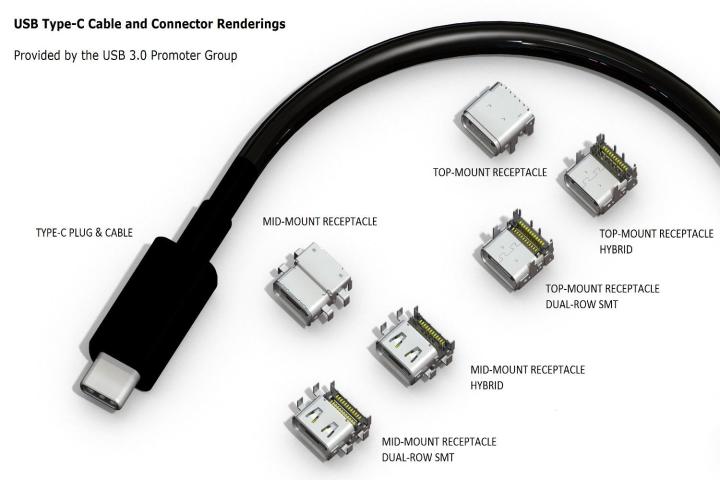
Related: What is USB Type-C, and what will it mean for computing once it’s released?
The spec has been sent over to the USB Implementers Forum, which will oversee the establishment of a compliance and certification program for USB Type-C. This part of the process ensures that the cables and connectors will work swimmingly with future devices.
Why does USB Type-C matter?
USB Type-C is significant for a few reasons. Firstly, it is much slimmer than current USB connectors, which will allow for the creation of slimmer devices. Secondly, USB Type-C will be able to work with laptops, smartphones, and tablets as well.
Related: We get our first look at USB Type-C cables and connectors
Also, as an extra convenience, USB Type-C is reversible. Unlike today’s connectors, there is no “wrong way” to plug in a USB Type-C cable. Either side will work.
Plus, they’ll be able to deliver 100 watts of power, and be capable of transmitting 10GBps of data. In short, USB Type-C could signal the beginning of the end for the bulky power bricks that are commonly associated with PC laptops.
“Interest in the USB Type-C connector has not only been global, but cross-industry as well,” Brad Saunders, the Chairman of the USB 3.0 Promoter Group says. “Representatives from the PC, mobile, automotive and IoT industries have been knocking down our door anticipating this new standard. This specification is the culmination of an extensive, cooperative effort among industry leaders to standardize the next generation USB connector as a long-lasting, robust solution.”
When will USB Type-C devices arrive?
This development, in conjunction with innovations elsewhere like the creation of Intel’s fanless Core M processor, could pave the way for super-slim tech gear to hit the market in the not-so-distant future. When Digital Trends spoke with a representative from the USB 3.0 Promoter Group, we were told that devices that are USB Type-C ready could arrive “by early 2015.”


